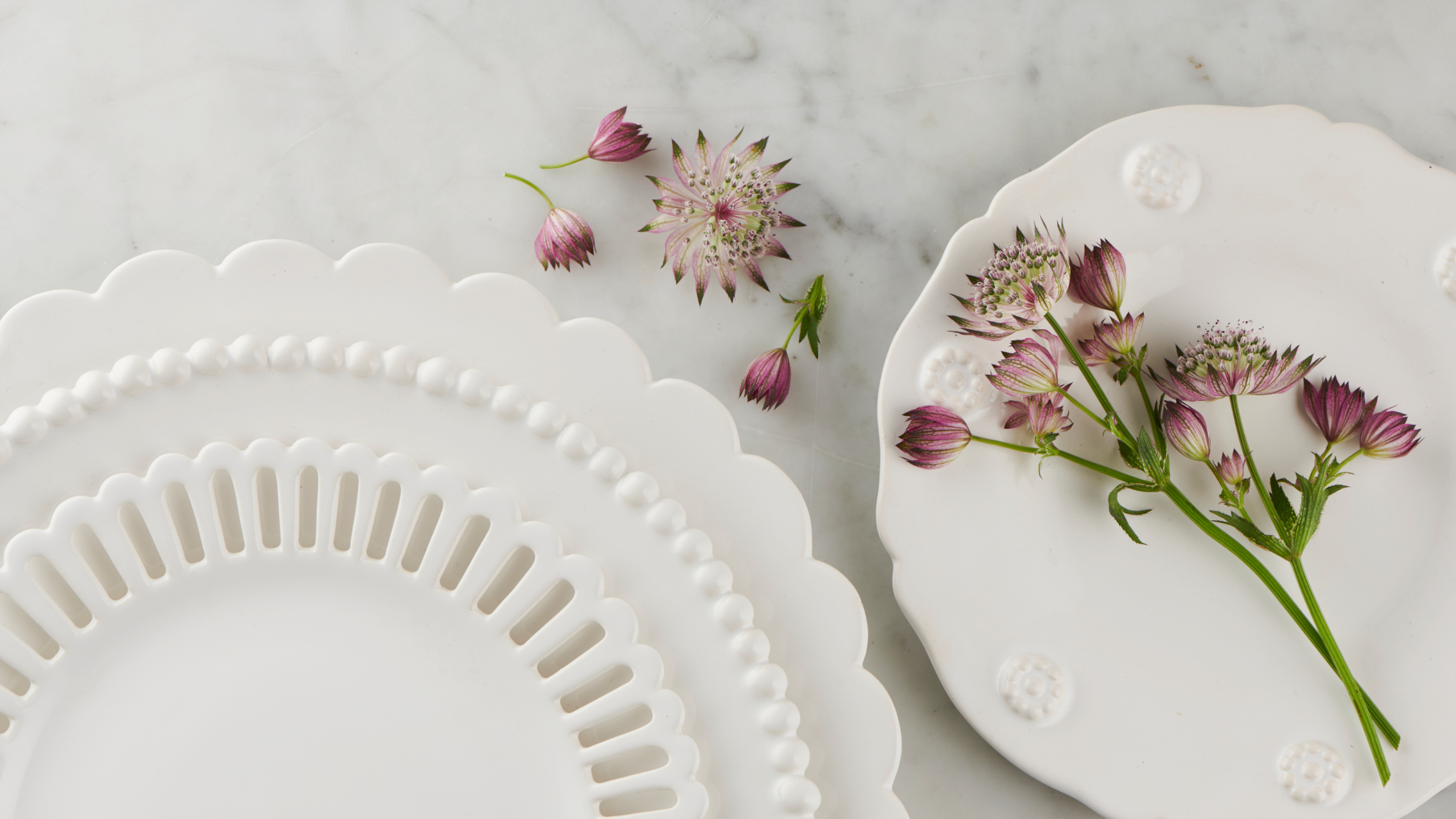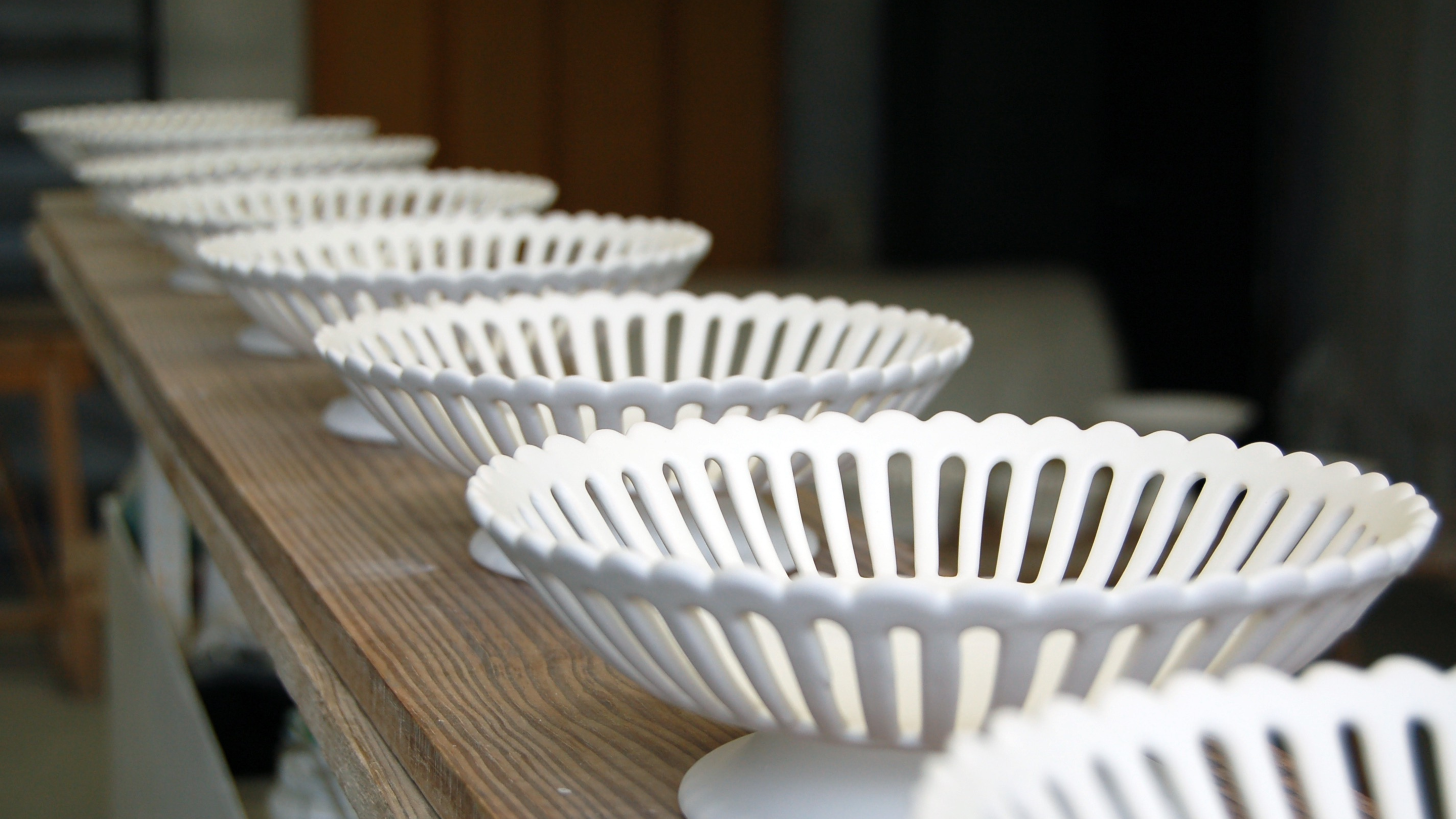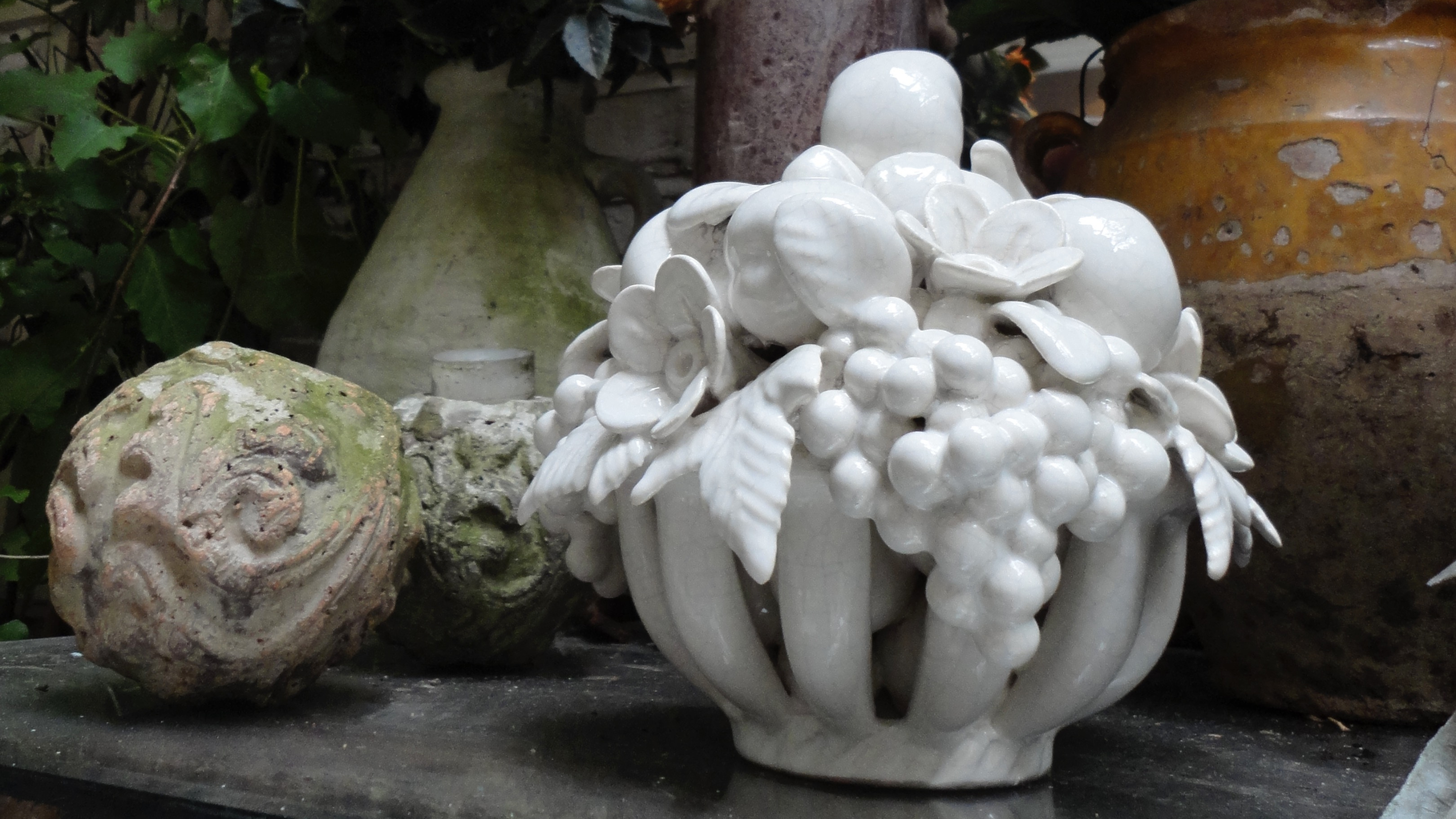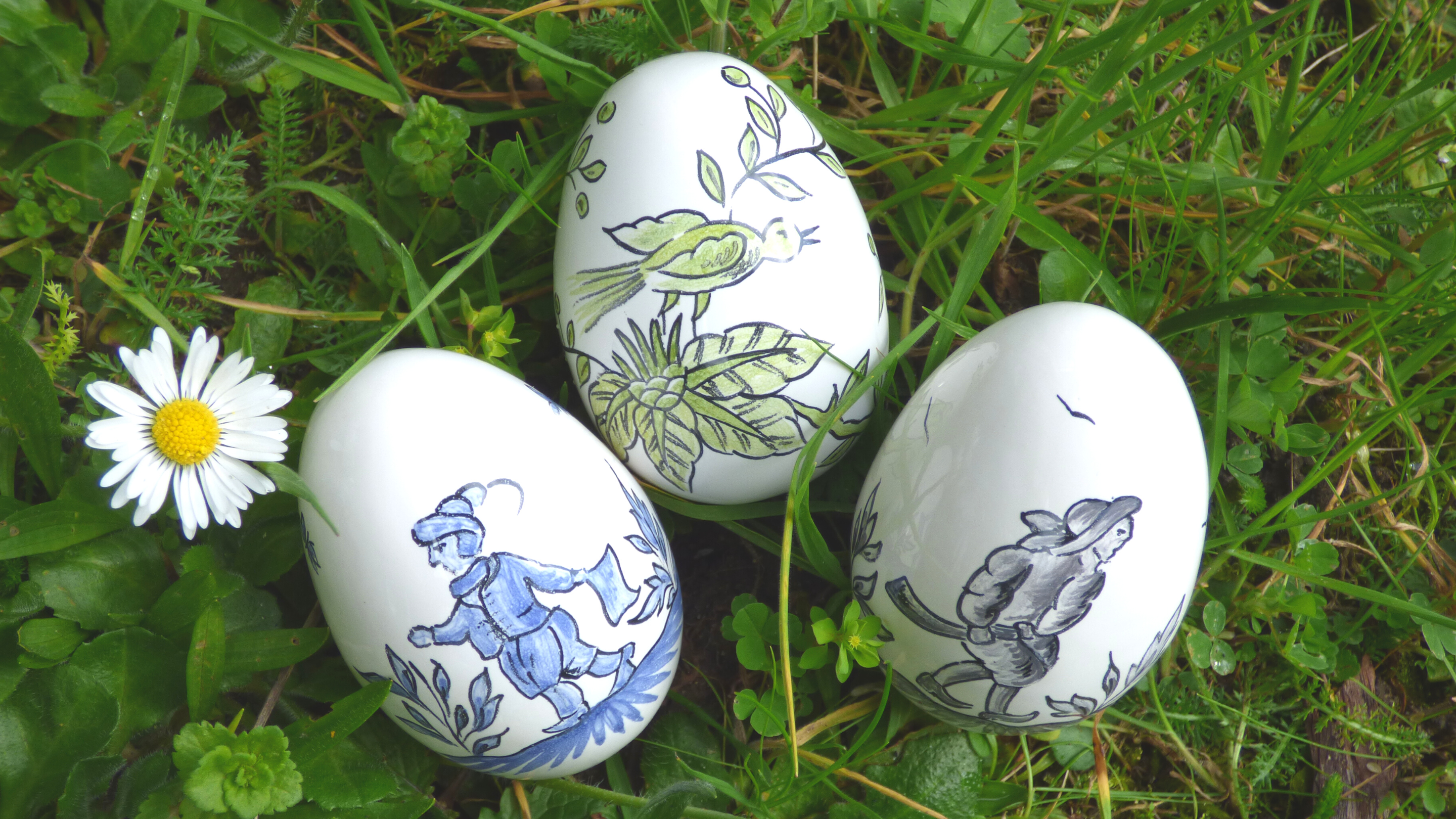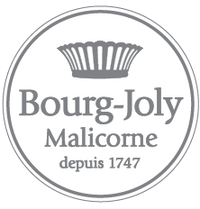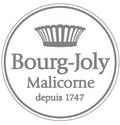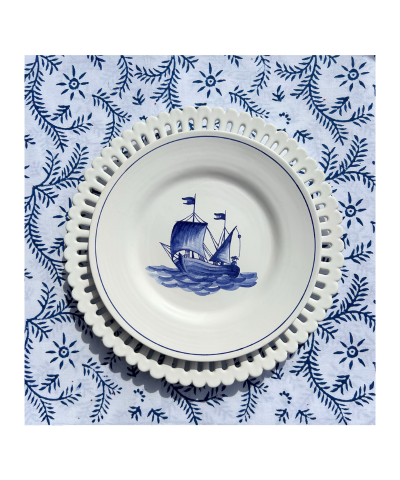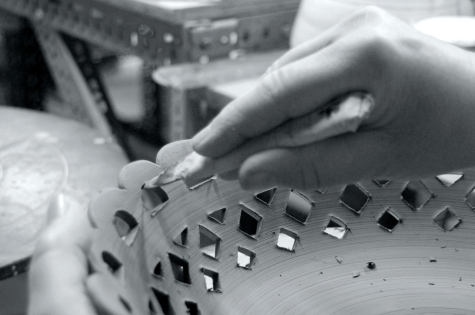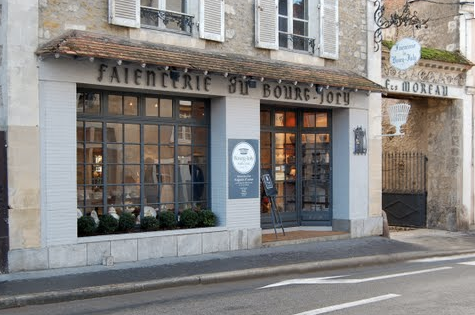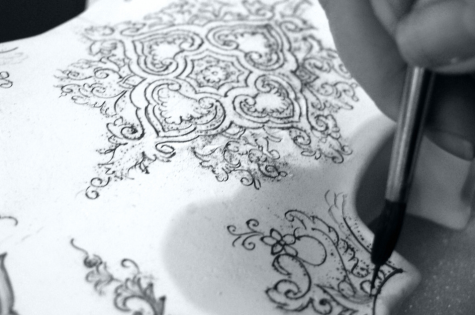CT The History of Bourg-Joly Malicorne
An Ancestral French Treasure

Bourg-Joly Malicorne, faïence d’art du Bourg-Joly, was founded in 1747, in the heart of the Sarthe River valley by Jean Loiseau. It is the oldest earthenware company still in operation in Malicorne.
Faïence, or tin-glazed and enamelled earthenware, first emerged in France during the 16th Century. Originally replicating designs that had traditionally been produced in wood or metal for everyday use, over the next two centuries, the styles and designs evolved towards finely crafted forms, elegant proportions and artistic hand painted patterns.
White clay was used to produce the finest results for the most sought-after pieces. Elaborate masterpieces and exceptional hand carving techniques helped to build the Bourg-Joly Malicorne name and make the products renowned throughout France.

Bourg Joly Malicorne is heir to the history of two factories established in Malicorne in the 18th century - thePlat d'Etainfaience factory founded in 1747 by Jean Loiseau and theMènevillefaience factory founded in 1797 by Guillaume Rabigot, son of a potter who worked for Jean Loiseau.
Over the course of our 250-year history, the skills and savoir-faire or know-how of these two founding establishments have been transmitted from generation to generation. Since April 2009, a new generation of passionate enthusiasts is carrying forward the tradition, our history and designs into the 21st century.
Today our craftsmen continue to handcraft and hand paint our products in much the same way as it has been done for over 250 years. In preserving French heritage, our historical traditions and ancestral techniques, we create heirloom pieces both classic and contemporary, that will be enjoyed by generations to come.

1747
Jean Loiseau opened the Plat d’Etain faience factory in Malicorne-sur-Sarthe.During the second half of the 18th century, the Plat d’Etain faience factory prospered and potters began moving to Malicorne.
Jean Loiseau invited ceramic painters from the historic city of faience, Nevers, to join him. Amongst them, came Pierre Rabigot, who introduced the Nevers style of decoration to Malicorne. Pierre Rabigot brought with him the formula for white tin-glazed enamel, which he decorated with a variety of polymorphic flower patterns and embellishments, designs which we still produce to this day.
Historic documents tell us that in 1784, the Inspector General of the Manufactures de Tours reported the success of the first Malicorne earthenware.

1785
Jean Loiseau died on 16thOctober 1785 and he was buried in Malicorne cemetery. His son Jean Louis succeeded him. Pierre Rabigot and his son, Guillaume, continued to work as potters at Le Plat d'Étain until The Revolution in 1789.

1797
In 1797, during the Abolition of privileges, the Méneville factory was founded by Guillaume Rabigot. The Mèneville faïence factory opened its doors on 13th February 1797, the second largest factory in the village, and is the direct ancestor of Bourg-Joly Malicorne.
During 19th century Plat d’Etain continued to prosper and was sold to Charles Cador in 1829.

1830
In 1830, Victor Rabigot Chenon, son of Guillaume, bought a tannery which included a watermill, a place called Bourg – Joly. In 1854, Victor Rabigot Soulis, his son, inherited Bourg – Joly.
Meanwhile, the daughter of Charles Cador (owner of Méneville factory), married Jules Beatrix who worked with his new father-in-law. Their work increasing the reputation of the Malicorne earthenware producers and by 1857 their products had earnt an excellent reputation.

1867
In 1867 both Caroline Cador and René Béatrix died, leaving their son Jules Béatrix, aged 28, to become the head of the establishment. In 1874 he too died, leaving his widow, Eloise Pellerin to manage the earthenware factory until her daughters, Marie Angèle and Marie Juliette came of age. The eldest daughter, Marie Angèle, married Leon Pouplard whilst the younger married Jules Michel Moreau.

1888
Leon Pouplard managed the Plat d’Etain factory alongside his mother-in-law Eloise Pellerin. They adopted the same approach as the Rabigot family at Bourg-Joly, developing a more artistic product range to ensure the continued success of the factory.
In 1898 Léon Pouplard bought moulds for a number of statues together with a range of lavishly decorated plates, from Graindorge, an earthenware producer in Brittany. The end of the 19th century marked the development of an artistic style of earthenware in Malicorne.

1899
On the death of his mother in 1899, Emmanuel Rabigot took over Bourg-Joly with the help of his brother-in-law André Arondel. However, following his election as mayor of Malicorne in 1899, he sold Bourg-Joly to his cousin Gustave Leroy Dubois in 1901.
Gustave Leroy Dubois focussed on producing artistic earthenware and high-quality products, attracting many artists such as Hervé Mathé and Jules Ronsin to come and work with him. Together with Léon Pouplard, he bought the moulds from the Bonnétable faience factory when it closed in 1912.

1914
In 1914 Gustave Leroy Dubois was called up to the army. He sold Bourg-Joly to Marie Juliette Béatrix, who had inherited half of the Plat d’Etain faïencerie, managed by her sister Marie Angèle and her husband Léon Pouplard.
This marked the end of the Rabigot and Leroy Dubois families involvement in Bourg-Joly.

1918
In 1918, Jules Moreau bought Bourg-Joly for his son, Jules, and a new dynasty went on to oversee the artistic heart of Malicorne for 5 generations.
La Faïencerie Artistique du Bourg Joly Malicorne, focused on artistic rather than utilitarian earthenware, and developed a network of outlets throughout France and Europe.
After 60 years of managing his earthenware factory Le Plat d’Etain, Léon Pouplard died without descendants. He left the pottery to his nephew Jules Moreau. Bourg Joly Malicorne then brought together the two historic factories that had influenced the history of Malicorne so profoundly.
Bourg-Joly inherited Leon Pouplard’s famous bestiary, countless pattern templates and moulds for plates and statues which enriched its heritage.

1993
In 1993, the Moreau family sold the Faïencerie to Jean-Pierre Fouquet who, with his wife Brigitte, continued the tradition inspired by the Loiseau, Rabigot, Cador-Beatrix, Pouplard and Moreau families.
The Fouquets helped the earthenware factory to progress into the new millennium. Using their unique expertise, they created the shop 16 rue Carnot in Malicorne where custom-made and limited-edition products became their speciality.
In 2007, La Faïencerie was acquired by Thierry and Véronique Taravel. The financial difficulties and the significant need for investment, exacerbated by the 2008 financial crisis, brought an end to production in December 2008.

2009
A new page of history began when B. Denis, born in Fontaine-Daniel (53) and Eric Le Calvez together with the former employees and their savoir-faire, rekindled the ovens on April 7, 2009.
Today, Eric and Sophie Le Calvez and their team are turning a new page in the history of the manufacturer. Based on the team’s unique production knowledge and a huge investment programme in the historic Bourg-Joly site, the atelier is once more the beating heart of the village.
The workshop has been renovated, a new kiln installed, giving Bourg Joly a new lease of life. Collaboration with designers, participation in numerous trade fairs and exhibitions are all helping to reposition and re-energise the business.
The company is finding new markets exporting to USA, Japan, Sweden, Germany, Italy, Switzerland, Austria, Belgium, Denmark and the Middle East.

2011
Bourg Joly was commissions to create 342 of its signature openwork baskets for the Monaco Royal Wedding. The baskets formed part of the table decorations at Prince Albert and Princess Charlene’s wedding celebrations at the Monaco Opera.

2012
Bourg-Joly was invited by Mr & Mrs de Nicolay to exhibit pieces at their home the Château du Lude throughout the summer.
Photography Guy Durand

2013
Bourg Joly Malicorne was at the centre of a major exhibition Le Grand Atelier EPV on exceptional Living Heritage Companies at Harrods, London.
Photography Guy Durand
2017
Bourg Joly Malicorne became a supplier of luxury tableware to one of the major French Fashion houses.
2018
In 2018 Bourg Joly Malicorne worked with an exclusive US event designer to provide 125 delicate hand carved and finely gilt baskets as part of the 18th century inspired theme for the wedding of the daughter of a renowned American designer.
We would like to thank Odile Chardon and the Moreau family for their help in putting together the history of Bourg Joly.
